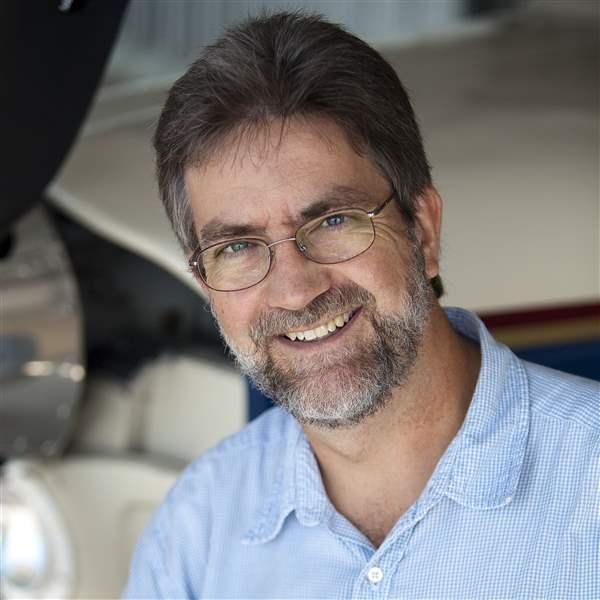How would you perform under fire?

One of the best parts of my job is the opportunity to share the flight-training experiences of others, both students and flight instructors. As you might imagine, I've heard many--ranging from the relatively routine to the totally extreme. Recently I was able to tell the story of some flight training that hits close to the extreme end of the spectrum.
Flight instructors, imagine teaching a student who's never driven a car before--much less flown in an airplane. This student is not a native speaker of the English language. And you're conducting the training in generally hot, dusty weather while wearing some 50 pounds of equipment, survival gear, body armor, weapons, and ammunition. After all, this training is taking place in a war zone. Students, can you imagine yourself learning to fly under these circumstances?
This story has been unfolding in Kirkuk, Iraq, where the 13 instructor pilots of the U.S. Air Force's 321st Air Expeditionary Wing are training members of Iraq's new air force. As a student, you might feel right at home in the training airplanes that are being used--Cessna 172 Skyhawks equipped with the Garmin G1000 glass cockpit. The only way in which they differ from similar airplanes used to train pilots across the United States, other than the flat gray military paint, is the fact that they are powered by Thielert diesel engines. The engine choice was necessitated by the fact that aviation gasoline (avgas) is not available in Iraq; the Thielert diesel engine can run on jet fuel.
The U.S. Air Force was asked in 2005 to help rebuild the Iraqi air force. "Since then we've grown into an organization of about 350," said Lt. Col. Nate Brauner, commander of the 52nd Expeditionary Flight Training Squadron, from Kirkuk. In 2006, there were only 750 people in Iraq's entire air force. By the summer of 2008 there were 1,900, and the objective by the end of 2009 is 6,000. By comparison, a small- to medium-size U.S. Air Force base would employ about 6,000 people--and Iraq's air force is dispersed among five facilities.
There are a few significant differences between flight training in the United States and in a combat zone. In the states, if you had to make a forced landing off-airport, it would be normal to sweat that landing--and breathe a sigh of relief when you're safely on the ground. Flying over potentially hostile territory, however, your work is just beginning at touchdown. "We have to be prepared to land outside the wire and survive until we're picked up and brought back to base," Brauner explained. "We're constantly aware that we're in single-engine aircraft that are unarmored, and flying over areas where people could easily take shots at us--and hit us."
Communication has been a challenge across the Iraqi air force--but it's not just learning the language of aviation, English. "When I was teaching a ground school class to the first four guys, I was teaching hemispheric altitude rules and when I said 'odd' and 'even' I saw they didn't understand," said Capt. Chris Duffett, who arrived in Iraq in November 2007 and began training the initial class of Iraqi pilots. His students had engineering backgrounds and knew the concepts, but did not recognize the English terms.
Instructors report that the Iraqi students--even those who have never driven a car before--make the same mistakes as American students they have trained. "They had a hard time remembering to use right rudder," said Maj. Charles Shumaker, who served with the unit from August 2007 to August 2008. "Getting them to look outside when they have a G1000 (is a challenge). When you get right down to it, they make the same mistakes. They were very proud to hear that."
Sometimes, his students would have to interrupt their training to check on their families. "The Iraqis were in a very precarious situation with their families and security over there," said Shumaker. "It was frustrating when you were doing training--just when the light bulb was coming on, they would go away for a couple of weeks. The vast majority were very proud to do what they were doing, and a joy to work with, but they couldn't go home and tell the world about what they were doing for fear of endangering their families."
Air Force instructor pilots selected for this mission all have experience in basic pilot training or in a formal training unit, said Brauner, who has been an instructor in the A-10 Thunderbolt II at Davis Monthan Air Force Base in Arizona, and the Raytheon T-6 Texan II at Randolph Air Force Base in Texas. "Quite a few of us have civilian time as well."
Duffett began flying in GA aircraft. "I was a member of the Civil Air Patrol and got my first flight in a CAP flight encampment." Duffett said he never would have believed that he'd find himself conducting primary training in Iraq.
The unit continues to make progress in its mission, graduating a class of nine new Iraqi air force pilots in mid-February--triple the size of the previous class.
More on the story, which appears in AOPA Flight Training's sister publication (see "Lock, Load, Liftoff," March AOPA Pilot), is available online. And as AOPA President Craig Fuller suggests (see "President's Perspective: Taking Pride in General Aviation,"), be sure to tell your friends how much you enjoy learning to fly.
< i >E-mail Mike Collins, editor of AOPA Flight Training, at [email protected].



